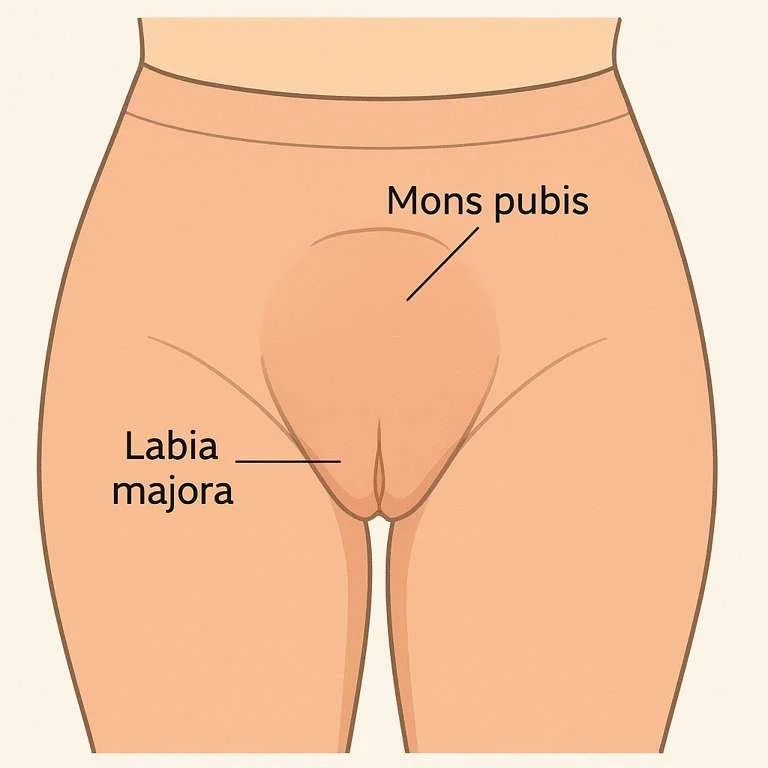What Causes Camel Toe and How to Fix It
Many women have experienced it. You put on leggings, swimwear, or yoga pants and suddenly notice a visible bulge or outline in the crotch area. It’s commonly called camel toe, and while it may seem like a fashion issue, it often reflects real anatomical features that can cause discomfort or embarrassment.
If you’ve found yourself adjusting your clothing, avoiding certain outfits, or wondering why this happens to you and not others, you’re not alone. This article explains what causes the appearance of camel toe, when it might signal an underlying concern, and what options are available to correct or minimize it.
What Is Camel Toe, Really?
The term “camel toe” refers to the visible outline of the labia or mons pubis when tight clothing presses against the genital area. While often mentioned in pop culture or social media, the experience is personal and often frustrating.
For some women, it’s a mild annoyance. For others, it leads to daily insecurity, frequent outfit changes, and even physical discomfort during workouts or sitting.
Understanding the anatomy behind it can help make sense of what’s happening and why.
What Causes Camel Toe?
Several factors can contribute to a visible bulge or outline in snug clothing. These include:
1. Prominent Labia Majora
The labia majora are the outer folds of skin that cover and protect the inner structures. If they are naturally fuller, they may create a visible contour, especially in tight fabrics like spandex or Lycra.
2. Fat Distribution and Mons Pubis Fullness
The mons pubis is the soft tissue above the pubic bone. Some women store more fat in this area due to genetics or hormone levels. Even women at a healthy weight may notice a rounded bulge here that creates tension against clothing.
3. Labia Minora Protrusion
When the labia minora extend beyond the labia majora, the tissue may press outward against underwear or leggings. This is more likely if the inner lips are naturally long or stretched.
4. Fabric and Clothing Style
Some pants or underwear designs are cut in a way that pulls vertically or rides up. Even women without anatomical prominence may notice camel toe depending on the clothing fit and movement.
When It Becomes a Problem
For many, camel toe is just a fashion inconvenience. But if it causes any of the following, it may be time to explore a more permanent solution:
Daily self-consciousness when getting dressed
Avoidance of gym wear, swimwear, or fitted pants
Physical irritation, rubbing, or chafing
Emotional distress or body image concerns
Excessive sweating or discomfort during activities
These symptoms are valid. You do not need to “just get over it” or constantly adjust your clothing.
Solutions for Camel Toe
Depending on the cause, there are both non-surgical and surgical treatments that can help. Here are the most common approaches.
Non-Surgical Options
Clothing Adjustments: Choose thicker fabrics, looser cuts, and designs with reinforced seams in the crotch.
Inserts or Liners: Some women use adhesive pads that reduce friction and create a smoother appearance under clothing.
Hair Removal: For some, grooming the area can reduce added volume or friction, although it does not change the structure underneath.
These may help short-term, but they do not address the root anatomical cause.
Surgical Options
For women seeking a long-term solution, aesthetic procedures are available to reduce volume or reshape the area.
1. Labia Majora Reduction
This procedure removes excess tissue or fat from the labia majora, creating a smoother contour. It is often combined with skin tightening for patients who experience sagging.
2. Labia Puffing Correction
While labia puffing surgery is typically used to add volume, the same area can be contoured by removing excess tissue or fullness if over-pronounced. This improves symmetry and reduces bulging in tight clothes.
3. Mons Pubis Liposuction
If mons pubis fullness is contributing to the bulge, gentle liposuction can reduce localized fat in this area. This helps soften the silhouette without affecting nearby structures.
These procedures are often performed under local anesthesia with short recovery times. Most patients resume light activity in a few days and feel comfortable wearing fitted clothing after a few weeks.
You can learn more about labiaplasty and related procedures by contacting Adonis Plastic Surgery in Torrance, CA.
Is Camel Toe the Result of “Fat Labia”?
Many women search this term out of frustration, but the phrase fat labia is not a clinical diagnosis. What you are seeing may be a combination of:
Elongated labia minora
Prominent labia majora
Fullness in the mons pubis
All of these are common and treatable, depending on your goals.
When to Consider Treatment
If camel toe affects your confidence, your wardrobe choices, or your comfort, you do not need to justify wanting to fix it. At Adonis Plastic Surgery, we help women explore whether cosmetic treatment is right for them by offering honest, private, and medically sound consultations.
Final Thoughts
Camel toe is more than a style issue. For many women, it reflects underlying anatomical features like labia majora prominence, mons pubis fullness, or labia minora projection. While clothing changes can help, permanent solutions are available for those who want real change. For insight on how labia vary in size, shape, and cultural expectations, check out this overview of labia variation and appearance.
If you are considering a procedure to address camel toe, learn more about your options for labia puffing correction, labia majora reduction, or mons pubis sculpting by speaking with a qualified provider.


